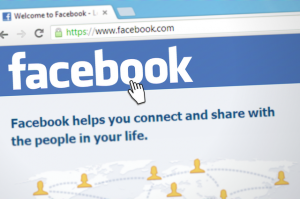 Getting content to go viral has long been seen as the Holy Grail of internet marketing. If you can get even one piece of something you have produced to go viral, then traffic will come flooding in from all corners of the internet, and riches will not be far behind. That's the belief., that's the expectation, and an entire cottage industry sprang up around that concept.
Getting content to go viral has long been seen as the Holy Grail of internet marketing. If you can get even one piece of something you have produced to go viral, then traffic will come flooding in from all corners of the internet, and riches will not be far behind. That's the belief., that's the expectation, and an entire cottage industry sprang up around that concept.
The basic premise of the model relied on two things. First, what we have come to know as clickbait. Clickbait is a headline that is specifically written to force the user to click to see what the article is talking about. An example might be, “They might look like mere shadows on the wall, but the secret behind them IS SIMPLY AMAZING!” Of course you'll click, even if you don't want to click, you will anyway to find out what the secret is; that's human nature, and that's the point.
Combine clickbait with the way Facebook's newsfeed used to work, and it became relatively easy for companies well versed in the method to make something go viral, basically on command. It made a lot of people a lot of money, and then, something happened.
Uh Oh, What Happened?
Facebook happened. The company worked out that they could make changes to the way their newsfeeds worked that would wind up severely limiting the amount of content that their users were actually seeing, while simultaneously putting more money in their pockets. That's a win for Facebook in two ways, because they got to fatten their bottom line while at the same time being able to claim an improvement to overall user experience, because Facebook's newsfeed in its unfiltered form was essentially being crushed by its own weight. Too much content was hitting too fast for its users to realistically absorb it all.
The problem though, is that these changes essentially gutted the viral content machine method of marketing. You may think that gutted is too strong a term, but consider the case of Upworthy. This is a great website whose entire business model essentially rested on the way Facebook's newsfeed worked before the change. In November 2013, they had 90 million unique visitors a month. A month later, they saw a 25% decline in visitors to 67 million. In March-April of 2014, they had plummeted to just 42 million unique visitors for the month. That's a disastrous fall of more than 50% in visitors in just four months.
A Model That Was Doomed To Fail
Upworthy is not alone. There have been several other companies that have experienced similar precipitous declines in unique visitors per month on the heels of the Facebook change. However, this is not new, or even news. Any business that is too heavily dependent on a single source for the bulk of its traffic or revenue is doomed to fail. If the thing they are reliant on changes, even moderately, it can completely rewrite the rules and bring them to ruin.
The same thing happened when Google released the Panda update to its algorithm. Suddenly, thousands of small Made For Adsense sites were rendered useless overnight. The lesson here is clear; having all your eggs in one basket is as unwise now as it has always been. If you're running a business using the all-eggs-in-one-basket model, you're living on borrowed time. Take steps now to diversify, before you have something like the Upworthy experience.

 (918) 234-1077
(918) 234-1077 
